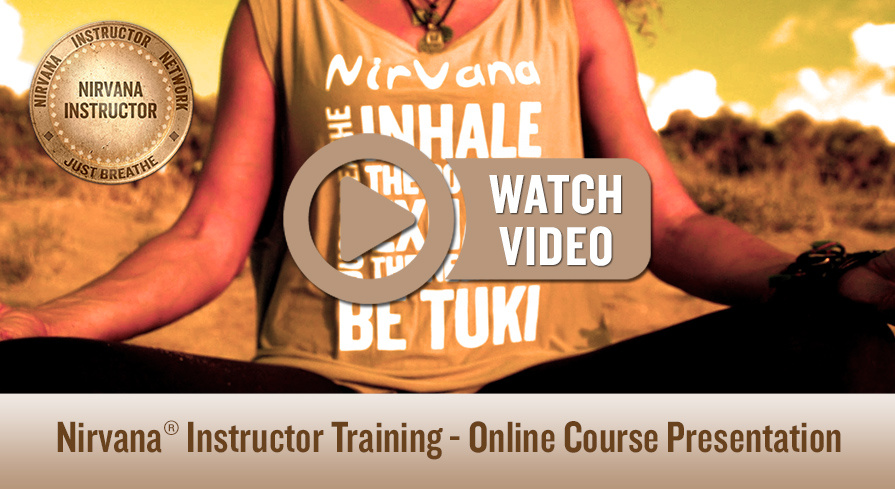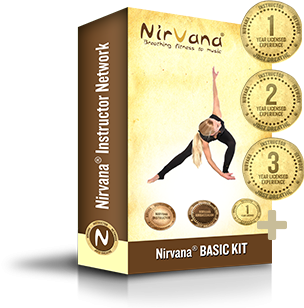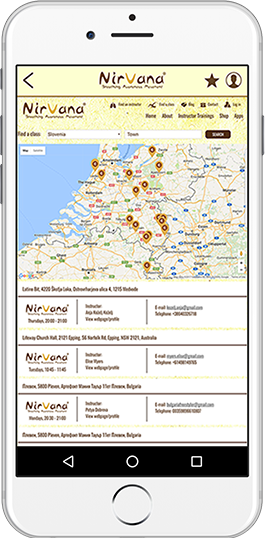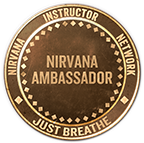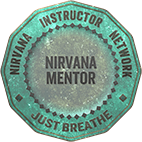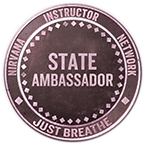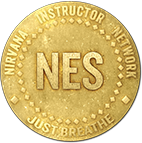How to Attain Nirvana
Explore this Article
Following the Noble Eight Fold Path
Attaining Nirvana in Your Everyday Life
Navigating the Four Truths
Article Summary
Questions & Answers
Related Articles
The Four Noble Truths are the essence of Buddhism and provide a plan
to deal with all of the suffering that humans face. These truths state
that life is filled with different types of suffering; suffering has a
cause and an end; and you reach Nirvana when you end this suffering. The
Noble Eightfold Path outlines the steps you must take to achieve
Nirvana in your life. The Four Noble Truths describe the sickness in
the human experience, and the Noble Eightfold Path is the prescription
that provides healing. Understanding the truths and traveling the path
will lead to peace and happiness in life.
Part 1
Following the Noble Eight Fold Path
-
1Meditate regularly. Meditation is the key to
changing how your mind works and will allow you to travel the path to
nirvana. It should be a part of your everyday life. While you can learn
to meditate on your own, a teacher can help guide you and apply proper
techniques.[1] You can meditate alone, but it is helpful to meditate with other people and under the guidance of a teacher.[2]- You cannot travel the path without meditating. Meditation will help you better understand yourself and the world.
-
2Have the right view. The Buddhist teachings (i.e. The
Four Noble Truths) are the lens that you view the world through. If you
are unable to accept the teachings, you will not be able to follow the
other steps in the path. The right view and the right understanding is
the foundation of the path. See the world as it really is and not as
you would like for it to be.[3] You seek to understand reality completely and through an objective lens. This requires you to examine, study, and learn.- The Four Noble Truths are the basis of the right understanding. You
must believe that those truths describe things as they really are.[4] - Nothing is perfect or permanent. Think critically about situations
instead of inserting your personal feelings, desires, and concerns.
- The Four Noble Truths are the basis of the right understanding. You
-
3Have right intentions. Commit yourself to developing
an attitude that is line with your belief system. Act as if all life is
equal and deserves to be treated with compassion and love. This applies
to yourself and to others. Reject thoughts that are selfish, violent,
and hateful. Love and non-violence should should be the rule.[5]- Show regard for all living things (e.g. plants, animals, and
people) regardless of their status. For example, you would treat a
wealthy person and poor person with the same respect. People from all
backgrounds, age groups, races, ethnicity, economic groups should be
treated equally.
- Show regard for all living things (e.g. plants, animals, and
-
4Speak the right words. The third step is the right
speech. When practicing the right speech, you do not lie, slander,
gossip, or speak harshly. Instead you speak kind and truthful words.[6] You words should affirm and uplift others. Knowing when to be silent and holding back your words is also important.- Having the right speech is something you practice every day.
-
5Have the right action. Your actions flow out of what is in your heart and in your mind. Treat yourself and other people well.[7]
Do not destroy life or steal. Live a peaceful life and help other
people live peaceful lives as well. Be honest when you deal with other
people. For example, you would not deceive or lie to get ahead or get
something that you want.[8]- Your presence and actions should be positive and improve the lives of other people and society.
-
6Choose a right Livelihood. Choose a profession that
is in agreement with your beliefs. Do not have a job that harms other
people, involves killing animals, or cheating. Selling weapons, drugs,
or working at a slaughterhouse are not acceptable occupations.[9] Whatever profession you choose, you must carry it out with integrity.- For example, if you work in sales, you would not use deception or lies to get people to purchase your product.
-
7Practice the right effort. Putting true effort into
anything that you do will lead to success. Rid your mind of negative
thoughts and focus on positive thinking. Have enthusiasm for whatever
you do (e.g. school, career, friendships, hobbies etc.).[10]
You have to consistently practice having positive thoughts as this does
not always come naturally. This will prepare your mind to practice
mindfulness.[11] The four tenets of right effort are:- Prevent evil and unwholesome states (sensual desire, ill will, worry, doubt, restlessness) of from arising
- Get rid of evil and unwholesome states that have already arisen by
countering them with good thoughts, redirecting your attention to
something else, or confronting the thought and investigating the source
of the thought.[12] - Produce good and wholesome states
- Maintain and perfect the good and wholesome states
-
8Practice Mindfulness. Mindfulness allows you to see
reality and see things as they really are. The four foundations of
mindfulness are contemplation of body, feelings, states of mind, and
phenomena. When you are mindful, you live in the moment and are open to
the entire experience.[13]
You focus on your present situation not on the future or the past. Be
attentive to your body, your feelings, your thoughts, your ideas, and
everything around you.[14]- Living in the present frees you desires from your future and past.
- Mindfulness also means being attentive to other people’s feelings, emotions, and body.
-
9Focus your mind. Right concentration is the ability to focus your mind on a single object and not be distracted by outside influences.[15]
Going through the other parts of the path will allow you concentrate.
Your mind will be focused and not filled with stress and anxiety. You
will have a good relationship with yourself and the world. Right
concentration allows you to view something clearly and as it truly is.- Concentration is similar to mindfulness. However, when you
concentrate you are not aware of all of the different sensations and
feelings. For example, if you are concentrating on an exam, you are
only focused on taking the exam. If you were practicing mindfulness
during the exam, you would notice how you felt taking the exam, how the
other people around you were acting, or how you were sitting during the
exam.
- Concentration is similar to mindfulness. However, when you
Part 2
Attaining Nirvana in Your Everyday Life
-
1Practice Loving Kindness (metta bhavana). Metta means
non-romantic love, kindness,and friendliness. It is a feeling that
comes from your heart, and it has to be cultivated and practiced. It is
usually practiced in five stages. If you are a beginner, try to stay in
each stage for five minutes.[16]- Stage 1- Feel metta for yourself. Focus on feelings of peace,
tranquility, strength, and confidence. You can repeat the phrase “May I
be well and happy.” to yourself. - Stage 2- Think of a friend and all of the things that you like about
them. Repeat the phrase, “May they be well; may they be happy.” - Stage 3- Think of someone that you are neutral about. You do not
like them or dislike them. Consider the person’s humanity and extend
your feelings of metta to that person. - Stage 4- Think of someone that you do not like at all. Instead of
thinking about why you do not like them and having hateful thoughts,
send your feelings of metta to them. - Stage 5- In this last stage, think of every single person including
yourself. Send metta to those people, your city, your neighborhood,
your country, and the entire world.
- Stage 1- Feel metta for yourself. Focus on feelings of peace,
-
2Practice Mindfulness of Breathing. This type of
mediation will teach you to concentrate and focus your thoughts.
Through this mediation you can learn to practice mindfulness, relax, and
rid yourself of anxiety.[17]
Find a sitting position that is comfortable for you. Your spine needs
to be upright and relaxed. Your shoulders should be relaxed and slightly
rolled back and down. Support your hands on a cushion or in your lap.[18] Once you have your posture, begin going through the different stages. Each stage should last for at least 5 minutes.- Stage 1- Count internally (breathe in, breathe out, 1 breathe in,
breathe out 2, etc.) after each breath until you reach 10. Start over
once you have reached 10. Focus on the sensations of breathing in and
out. Your mind will wander. Just bring your thoughts back to your
breathing. - Stage 2- Continue to breathe in cycles of 10, but count before you
inhale this time (e.g.,1, breathe in, breathe out, 2, breathe in,
breathe out, 3, etc.). Focus on the sensations you have when you are
inhaling. - Stage 3- Breathe in and out without counting. Try to see your
breathing as a continuous process instead of just breathing in and
breathing out. - Stage 4- Your focus should now be in the sensations of your breath
as it enters and leaves your body. This may be your breath passing over
your nostrils or your upper lip.[19]
- Stage 1- Count internally (breathe in, breathe out, 1 breathe in,
-
3Affirm and uplift others. The ultimate goal of Buddhism is to achieve inner peace and then share your experience with other people.[20]
Attaining nirvana is not only for your benefit, but for the world as
well. It is important for you to be a source of encouragement and
support for others. This is as simple as giving someone a hug if he or
she is feeling down. If someone is important to you or does something
nice for you, let the person know how you feel. Let people know that you
are grateful for them and appreciate them. If someone is having a bad
day, provide a listening ear. -
4Treat people with compassion. Your happiness is directly related to the happiness of other people.[21] Showing compassion promotes happiness for all. You can practice compassion in many ways:[22]
- Turn off your cell phone when you are spending time with friends and family.
- Make eye contact when someone is talking to you and listen without interrupting.
- Volunteer in your community.
- Open doors for other people.
- Be empathetic towards people. For example, if someone is upset,
acknowledge and try to understand why they are upset. Ask them what you
can do to help. Listen and show concern for their feelings.
-
5Be mindful. When you practice mindfulness, you pay
attention to how you think and feel in the present moment. Mindfulness
is not only for meditation but for your every day life as well. For
example, you can be mindful as you eat, shower, or get dressed in the
morning.[23] Start by choosing one activity and then focus on the sensations in your body and your breathing as you do it.[24]- If you want to mindful while you are eating, concentrate on the taste, texture, and smell of the food as you eat it.
- As you wash the dishes, pay attention to the temperature of the
water, how your hands feel as you clean the dishes, and how the water
feels as you rinse the dishes. - Instead of listening to the music or the television as you get
dressed in the morning, get ready in silence. Notice how you feel.
Were you tired or well rested when you woke up? How does your body feel
as you put on clothes or shower?
Part 3
-
1Identify suffering. Buddha describes suffering
differently than you may usually think of it. Suffering is inevitable
and is a part of life. Dukkha is the truth that all is suffering. [25]
Suffering is typically used to describe things such as sickness, aging,
accidents, and physical and emotional pain. Yet, Buddha considers
desires(i.e. especially unfulfilled desires) and cravings as suffering
as well. These two things are considered the roots of suffering because
humans are rarely ever satisfied or content. Once one desire is met,
another desire is created. This is a vicious cycle.- Dukkha means “that which is difficult to bear.”[26] Suffering is a large spectrum and includes things that are great and small.
-
2Determine the cause of suffering. Desire and ignorance are the root of suffering.[27]
Your unfulfilled desires are the worst type of suffering. For example,
if you are sick, you are suffering. While you are sick, you desire to
be well. Your unmet desire to be well is a greater form of suffering
than just being sick. Any time you desire a thing, opportunity, person,
or achievement that you cannot have, you are suffering. -
3End suffering in your life. Each of the four truths
is a stepping stone. If all is suffering and suffering comes from your
desires, then the only way to end suffering is by no longer having
desires.[30]
You must believe that you do not have to suffer and that you have the
ability to stop the suffering in your life. To end the suffering in your
life, you must change your perception and learn to control your
desires.- Controlling your desires and cravings will allow you to live with freedom and contentment.
-
4Attain the end of suffering in your life. The end of suffering can be attained by traveling the Noble Eightfold Path.[31]
Your path to nirvana involves can be summed up by three ideas. First,
you have to to have the right intentions and mindset. Secondly, you
have to live out your right intentions in your everyday life. Lastly,
you have to understand true reality and have the correct beliefs about
all things.- The eightfold path can be divided into three categories: wisdom
(right view, right intention), ethical conduct (right speech, right
action, right livelihood), and mental cultivation (right effort, right
mindfulness, right concentration).[32] - This path offers guidelines for how to live your everyday life.[33]
- The eightfold path can be divided into three categories: wisdom
Community Q&A
-
QuestionIf desire is the causation of
suffering, isn’t all of life desire? When we are hungry we desire food.
When tired we desire sleep. How do we banish these desires without dying
or losing our minds?Community AnswerYes, you are right, all of that is
driven by desire. There are three bases of desire: lobha (greed), dosa
(aversion), and moha (delusion). Desire within these three bases is
acknowledged as the causation of suffering. When you are hungry, it is
okay to eat in the motivation of fulfilling daily nutrition necessity
for doing the right effort. Do not eat more than you need because it
gains greed (lobha). It’s okay for you to desire to be free from these
three bases, it’s called right effort. To understand more, read about
Four Noble Truths and Noble Eightfold Path. It is also okay to read some
Dhammapada verse. -
QuestionIf all Buddhists ultimately desire
to attain Nirvana, then isn’t that a contradiction if they can’t attain
it as long as they have desire? I am confused.Community AnswerDon’t be confused by the word
“desire” used to explain the causes of suffering with the “desire” used
to describe one’s wish or will. An example of the former is our greed,
some examples of the latter are birthday wishes and our ambition.
Obsession about satisfying desire ultimately leads to all kinds of
suffering, while fulfilling a wish keeps one’s mind focused and
directional. Once we make a wish, we may not be as obsessive as
satisfying our desire to fulfill the wish. The “desire” to attain
Nirvana is an aspiration to all Buddhists who have to be mindful of all
conditions that may obstruct them to attain it, including their own
“obsessive desire” to attain it. -
QuestionOne of the tips on this page says,
“Find what you enjoy and do more of it,” but isn’t that just indulging
one’s desires and, therefore, increasing suffering?Community AnswerFinding what you enjoy more and
doing more of it does not lead to nirvana. You need to free yourself
from all defilements. The main cause for suffering is craving, which
happens due to greed, ignorance and hatred. The best way to attain
nirvana is meditating. -
QuestionHow exactly do I meditate? What do I think about or do?Lilith4Community AnswerTry to practice mindfulness. Focus
on what scents you are smelling, what the ground feels like beneath you,
the sounds you are hearing. Think of the little things. If you’ve never
meditated before, check out a mindfulness tutorial on YouTube, or
download the app Headspace. -
QuestionCan I attain nirvana if I’m not a Buddhist?Community AnswerTo attain nirvana, you have to
follow the exact path and methods taught in Buddhism. When you follow
them, your vision, beliefs, and understandings are adapted to Buddhist
teachings. It’s all about following the methods with your own
understanding with proper knowledge of “Dhamma.” -
QuestionCan Muslims attain Nirvana also?Community AnswerThere may be many ways of attaining Nirvana. Buddhism is just one way, so it is hard to say.
-
QuestionCould I attain nirvana if I have desires?Community AnswerNo. There are prerequisites that
should be fulfilled. According to Buddhism, you will be reborn again and
again until you attain nirvana. You have to fulfill those requirements
along your chain of births. -
QuestionWill I know when I have achieved nirvana, or will I have to wait until I die to know?Community AnswerAccording to Theravada Buddhism, there are four stages to attain nirvana, and you will know if and when you achieve each stage.
-
QuestionIf I achieve nirvana and choose not to be reborn to help others attain it, is that the end of my existence?Community AnswerNo. Attaining nirvana may seem to
be an end of material existence, but a consciousness at that state
transcends beyond space and time. It is a state of absolute freedom;
free from all kinds of spacial (distance, size, and volume), temporal,
and material obstruction (forms, objects, etc.). -
QuestionWhat will happen after I attain nirvana and die? I won’t be reborn, so what will happen?Tandin WangchukCommunity AnswerOnce you have attained nirvana, if
you want to help others to attain nirvana as well, you can choose to be
born again. Take example of Lord Buddha: he died at the age of eighty,
but attained nirvana way before that. That doesn’t necessarily mean he
was never reincarnated. It is said that one attains nirvana when one
knows what emptiness is. Once one does, he has freed himself from the
cycle of birth, but he can always choose to be reincarnated to help
others attain nirvana as well.
Tips
- Your path to enlightenment will be different from everyone else’s,
just as every snow flake takes a unique route through the sky. Do the
practise that you enjoy/comes natural/feels right to be doing. - Try different methods of meditating, they’re just tools and methods
to use along the way. A varied set of tools is useful at different
times. - Nirvana is attained when the misconception of the way the self (and
everything else) exists ceases permanently. There are many methods to
cause this can happen. None are right or wrong, better or worse.
Sometimes Nirvana occurs spontaneously and sometimes it takes a lot of
time and effort. - Eventually the seeker and the nirvana being sought need to be let go of.
- Nobody else knows your path (see the snowflake analogy above) yet
rarely will a teacher tell you to go to a different group and not their
group. Most teachers/traditions/sects have a very strong attachment to
to their prescribed route to enlightenment yet one of the main obstacles
to enlightenment is attachment to opinion/view. The irony shouldn’t be
lost on you along your journey. - Autonomous practise is essential in attaining nirvana. A teacher’s
role is to help you grow and become spiritually autonomous. Their role
is not to create co-dependency and regression to an infantile state, yet
this is very very common. - Achieving Nirvana will probably not be easy. It may take a long time. Even if it feels impossible, keep trying.
- You
can practice Buddhism on your own, but you may benefit from going to a
temple and having a teacher. Don’t rush to decide on a group or teacher.
Always trust your own instinct with this and take your time. There are
great teachers out there and some very unpleasant ones. Do a web search
of the temple/group/teacher and the words controversy and cult. Do your
homework. - The eightfold path is not a linear path. It is a journey that you travel every day.
- Find what you enjoy and do more of it.
References
- ↑ https://thebuddhistcentre.com/text/what-meditation
- ↑ http://www.bbc.co.uk/religion/religions/buddhism/customs/meditation_1.shtml
- ↑ http://www.buddha101.com/p_truths.htm#Four Noble Truths
- ↑ http://www.tricycle.com/new-buddhism/-noble-eightfold-path/eightfold-path
- ↑ http://www.tricycle.com/new-buddhism/-noble-eightfold-path/eightfold-path
- ↑ http://www.summitlighthouse.org/gautama-buddha-eightfold-path-chakras/
- ↑ http://www.buddhanet.net/e-learning/8foldpath.htm
- ↑ http://www.tricycle.com/new-buddhism/-noble-eightfold-path/eightfold-path
- ↑ http://www.tricycle.com/new-buddhism/-noble-eightfold-path/eightfold-path
Article Info
Categories: Buddhism
In other languages:
Português: Alcançar o Nirvana, Español: alcanzar el nirvana, Italiano: Raggiungere il Nirvana, Русский: достичь нирваны, Deutsch: Nirvana erreichen, Français: atteindre le nirvana, Bahasa Indonesia: Mencapai Nirwana
Did this article help you?









































